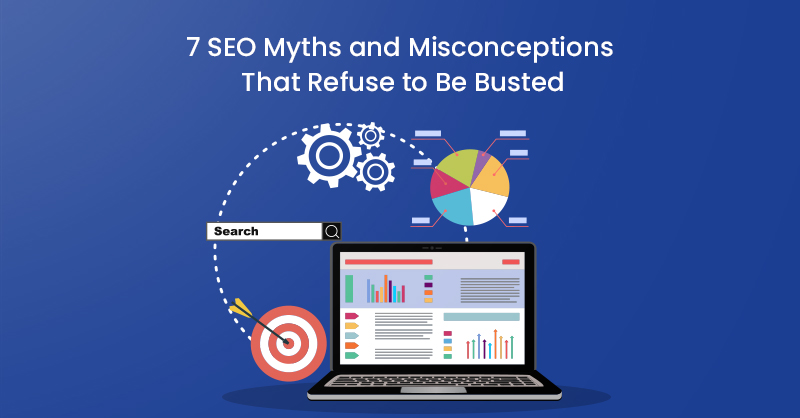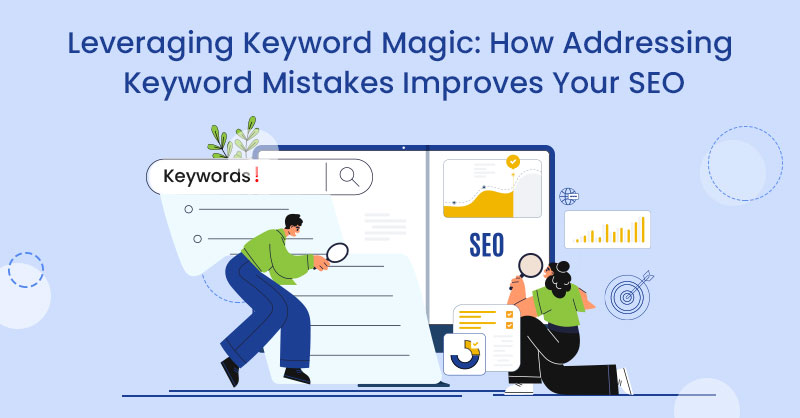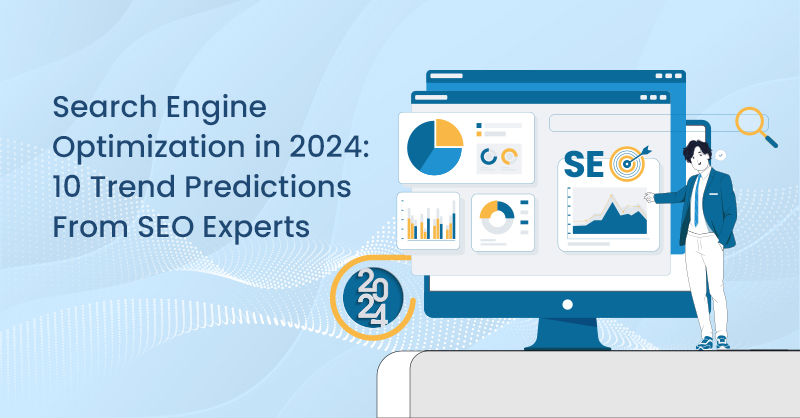SEO first appeared in the 90s. Back then, it was cutting edge, underappreciated, and, for the most part, poorly done. Algorithms were still in their infancy, and duplicate content, keyword stuffing, cloaking, and irrelevant backlinks were all the rage.
However, things have changed. In today's world, SEO is a mixture of complex factors that dictate both where you arrive on the search engine results page and how well your business performs overall.
That said, over the years, some SEO myths and misconceptions have emerged that refuse to be busted. That's why we're here to set the record straight.
Why do SEO best practices change?
SEO best practices change because Google changes its algorithm. It's that simple. The horse always steers the cart. So, let's first flashback to 1998 when Elon Musk hadn't yet had his hair transplant. Around the same time, a little-known company called Google was incorporating.
Two years later, in the year 2000, Google added a browser toolbar. Google built this toolbar to feed its new algorithm, PageRank (PR). A full two years later, Google started focusing on anchor text quality.
The Brandy update not so swiftly followed this in 2004, increasing the attention on anchor text relevance. In 2005 the XML sitemap was launched, followed by universal search update in 2007. Both updates created the search engine results page (SERP) as we know it today.
Now, locality, quality, authority, and popularity mattered. Christmas dinner was over, and the keyword stuffing was put away - forever! Between 2008 and 2010, Google added Google Suggest and the real-time search function. In doing so, it essentially created the modern approach to long and short-tail keywords.
It was the Panda, Penguin, Hummingbird, Pigeon, and Mobile-Friendly updates that were the real game-changers, though. Smashed to pieces were irrelevant backlinks, penalized were those poor page layouts, semantic search killed the liars, and more accurate local search results were delivered to users.
The short story is, Google created an SEO best practice tripod that consists of quality backlinks, keyword-optimized content, and website design. Not only were they born, but they became universally accepted best practice factors for SEO.
But some of those old-school concepts about how to optimize for SEO were hard to shift. In fact, you’ll commonly find tips on popular blogs that are years out of date in the SEO world. The key is to identify what really works, which tips merely amount to guesswork, and which are just plain bad advice.

SEO Myths and Misconceptions:
A myth is a widely held but false belief or idea. A misconception is a wrong or inaccurate misinterpretation of an idea. Unfortunately, in the field of SEO, there are many myths, misconceptions, and even fairy-tales that will never help but always hinder.
1. Without backlinks pointing to your site, Google will never rank you:
You will never rank on Google for anything without high-quality backlinks pointing to your page. This is because the Google algorithm sees backlinks as an important ranking signal. A direct relationship between the quantity and quality of backlinks and ranking is indisputable.
Case in point, a study conducted by MOZ found that 99.2% of websites that rank for keywords had at least one external link pointing to their page. It's quality that matters; Google sees backlinks as social proof and evidence of authority. Low-quality black hat backlinking may get you penalized.
However…
Backlinks are not the be all and end all of SEO - they are just one component of an entire strategy. While you may struggle to rank for keywords without backlinks, it can be done. But probably not for any keywords that are truly worth ranking for in the big picture. Basically, how many backlinks you need depends on how much competition you have.
2. Duplicate content can sink your SEO performance
Duplicate content confuses the heck out of Google. But the rumour is that Google actively penalizes your website for having duplicate content. That’s simply not the case.
What the search engine will penalize you for is lifting content straight from other websites and pasting it straight into a blog on your own site. Let’s hear it straight from the horse’s mouth: Google Search Central:
“Duplicate content on a site is not grounds for action on that site unless it appears that the intent of the duplicate content is to be deceptive and manipulate search engine results.”
Over the years, this has been interpreted to mean that if you have two pages on your website that contain the same content, Google will sink you to the bottom of SERP on purpose. That’s not true.
However…
Duplicate content can confuse Google. It looks at two pages on your website that are highly similar and gets confused about which one to rank. That’s why, if it’s necessary to have two very similar or duplicate pages on your website, you can use canonical links to tell Google exactly which page you want it to pay attention to for SEO.
3. Meta descriptions are important
Meta descriptions were once important but ceased to be some time ago. Lots of people (including pros, but mainly amateurs) still think that meta descriptions affect SEO.
These supposed experts are criminally misinformed. Why? In a rare move, all the way back in 2009, Google confirmed that meta descriptions do not affect your SEO. Where the confusion comes in is that meta descriptions, if they are well written, can impact a website's click-through rate.
While it doesn't affect your SEO, it can affect how well you are attracting traffic to your website when you appear on Google rankings. The core thing to remember here is, SEO and meta descriptions are related but are unconnected. It's still best practice to have good keyword-optimized meta descriptions so you can attract customers onto your site should they see you on SERPs.

4. Using Google Ads boosts your SEO results
Google confirmed some time ago that using or paying for Google Ads does not influence how high you rank organically on the SERP. Why? Well, SEO focuses on organic results.
If, however, you focus on search engine marketing (SEM), i.e., combine PPC with SEO, you may see quicker than average results. The reason for this is logical. If you appear on the SERP both as an ad and as a top organic result, you are taking up more of the SERP page, so it's far more likely people will click.
Exercise caution when talking to SEO experts who endorse this approach. There's no evidence to support the claim that running PPC ads directly impacts your SEO results. It has as much truth to it as the loch-ness monster does.
5. Just getting any backlinks you can will do your website good
You've just committed the cardinal SEO sin! To answer this question, we must think like doctors. Why do you think John Wayne walked funny? We don't know either. And when it comes to erroneous backlinks, no one truly knows. But like doctors, we know using the powers of deduction that John must have at some stage received a blow to the hip. You don't need a medical degree to know this, and you don't need an SEO Ph.D. to understand why low-quality backlinks definitely don't work.
Low-quality backlinks are generally defined as coming from websites with low Domain Authority. Google has also identified certain types of links that can harm your SEO. They know when links are “spammy” and not really related to the content of the website or webpage from which they originate. Too many of these can actually severely harm your website.
So not all backlinks are created equal and you should be careful about creating a spammy network of backlinks. Because Google really won’t like it.
6. New websites can’t rank as highly as older, more established websites
Google treats new websites like new babies. Well, not really, but an army of SEO professionals are certain that Google inflicts a mandatory 60-90 day incubation period on new websites post-birth before they allow the website to begin to rank.
So, it's time to go Darwinian on this. The average website lifespan is two years and seven months. So, this 90-day incubation equates to roughly 11% of a website's lifespan. That means the time in which mommy (a.k.a Google) protects it from the world wide web.
Now, if you will, compare that to a tiger. The playful young cub stays with its mother for roughly 10.5% of its lifespan. This is, of course, until the cub grows into the role of the world's most lethal apex predator. Nature is a cruel mother, as I'm sure you will agree. The tigress doesn't tuck the baby tiger in at night; it trains it to hunt, kill and live alone.
New websites are much the same as our baby tiger cub. While Google does not impose some kind of mandatory quarantine on new websites (they have steadfastly denied it, at least) websites need to be “taught” how to get competitive in the SEO foodchain before you’ll see results.
So, by virtue of the fact that ranking for key search terms is highly competitive and requires a lot of work, it’s highly likely that it will take a few months of consistent hard work before you see results. But, unfortunately, you can’t blame it on Google.
7. High bounce rate and low time on page affect your search engine rankings
Marketers often panic when they see high bounce rates and low time spent on a web page by users. In some instances, it’s a metric worth paying attention to. But it has less to do with SEO and more to do with the quality of your website.
Google has confirmed that bounce rate and low time on page do not impact your SEO results. That’s because there are plenty of scenarios where it makes total sense that a user would only spend a second or two on a single page of your website. So they don’t penalize websites for it and that’s the truth.
We hope that by demolishing some of these common SEO myths and misconceptions, you feel better equipped to create an actionable and effective SEO strategy. Whatever you do, keep an eye on Google’s frequently released updates and only take advice from true experts in the SEO field.







on
Thanks for sharing the nice article. I really enjoyed reading it. This is a very good guide, Your post covered all important aspects, related to seo myths
on
Wow Lauren! Some impossible to believe facts here. So resourceful, waiting for more such blogs.
on
Hey, thanks for sharing these misconceptions about SEO. Many experts get confused by these myths and make efforts in the wrong direction. This post was really helpful.